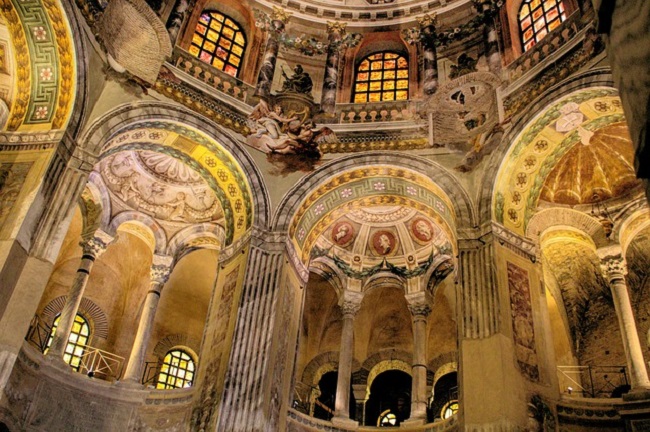#TravelTomorrow - Eat Today
Emilia-Romagna, Italy
A culinary region like no other - find out more
Stretching east-west from the Adriatic Sea across northern Italy, with the River Po to the north and the Apennine Mountains to the south, Emilia-Romagna is one of 20 administrative regions of Italy. It is a thriving region with a rich agricultural heritage that has resulted in a cuisine that is renowned the world over.
 |
| Po River delta, Italy (Image by chatst2 from Pixabay) |
Even if travel plans are scuttled by the pandemic in 2020, we can enjoy the region's gifts to the world's palate.
Prosciutti di Parma
Parma is the second largest city in the region, after Bologna. The succulent prosciutti di Parma is made with pigs raised locally, salted and cured, and then aged in underground caves.
Parmigiano Reggano
Authentic Parmigiano Reggano can only be produced in the Emilia-Romagna. This is where it gets it delicious nutty flavour. Eight quarts of milk go into one pound of this cheese, created with a traditional recipe and aged between 12 and 24 months.
Aceto Balsamico
Aceto balsamico, or balsamic vinegar, is made only in the province of Modena in Emilia-Romagna according to a strict recipe.
 |
| The Basilica Sanvitale Ravenna, Italy (Image by chatst2 from Pixabay) |
Risotto
Rice was introduced to Italy by the Moors and Saracens, and is found in Sicily as early as the 13th century. It eventually reached northern Italy, where it turns out the conditions are ideal for cultivation. The land is flat, and there is lots of water, and the Po Valley is still a major source of rice in Europe.
This brings us to our recipe - a risotto that is cooked with duck (traditionally wild duck, which also thrive in northern Italy and the Po Valley in particular), tomatoes, wine, and spices.
Riso con sugo di anatra selvatica
This risotto is common in the lowland areas around Ravenna and Ferrara. The original wild duck risotto, it is said, was created to honour Pope Paul III at the turn of the 16th century. The recipe has been handed down in monasteries and convents for centuries.
This version is flavourful and made for modern cooks.
1 1/2 cups arborio rice
1 pound skinless duck meat
2 cloves garlic, peeled
1 onion
1 leaf laurel
1 sprig rosemary
4 sage leaves, chopped
1 bay leaf
8 ounces red wine
1 1/2 cups tomatoes, peeled & chopped
1 quart beef broth
3 tablespoons butter
3 tablespoons olive oil
Salt, to taste
Pepper, to taste
Parmagiano-reggano cheese, grated
- Chop the garlic, rosemary, and sage together with the onion.
- Add 3 tablespoons of oil and 1 tablespoon of butter to a skillet and heat at a medium-high level.
- Saute the chopped onion mixture with the bay leaf for a few minutes.
- While they cook, chop the duck meat into small pieces.
- Add the meat to the skillet and brown.
- Now add the wine, and cook until it has evaporated.
- Add the chopped tomato to the mixture, and season with salt and pepper to taste. Cover and allow the sauce to simmer for about an hour. Add a little broth if it seems to get too dry.
- Now add the rice, stirring it into the sauce and letting it warm for a minute or two.
- Warm the broth, and add one ladle, stirring it into the rice. Cook until the broth is absorbed - about 15 to 18 minutes.
- Repeat with the rest of the broth, one ladle at a time.
- When it's done, remove from the heat. Stir in the remaining butter, and Parmigiano-reggano cheese to taste.
Comments
Post a Comment